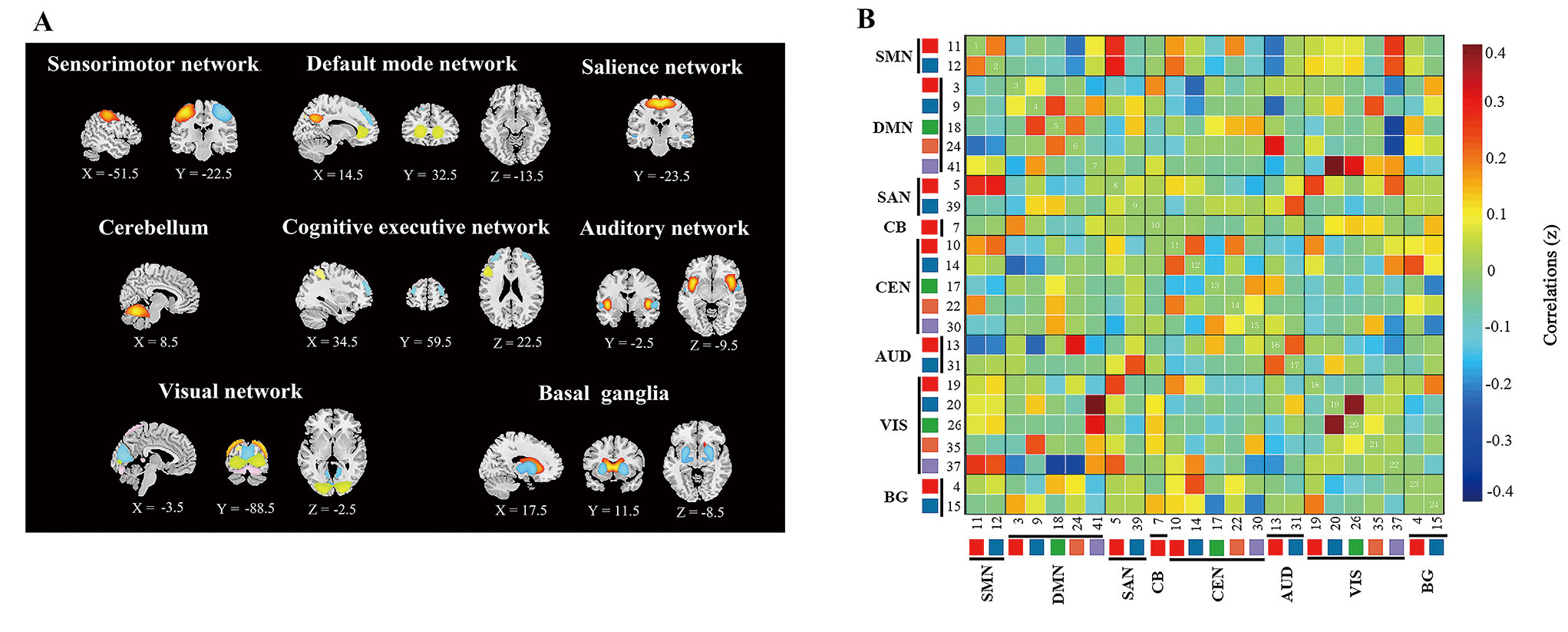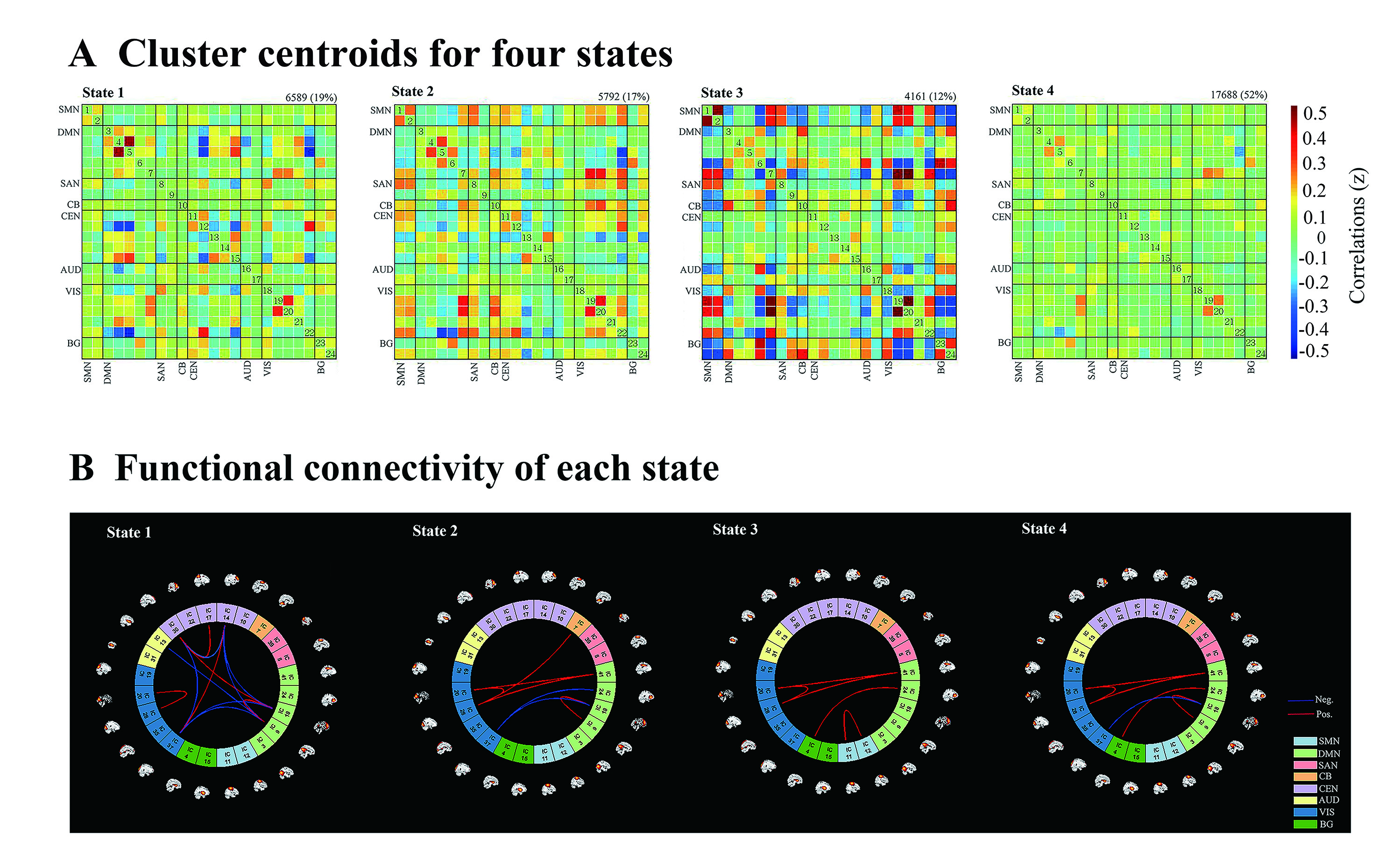Category: Parkinson's Disease: Neuroimaging
Objective: Our aim was to explore dynamic network connection changes in PD patients with RBD.
Background: Rapid eye movement (REM) sleep behavior disorder (RBD) is one of the common nonmotor symptoms of Parkinson’s disease (PD), characterized by frequently occurring REM sleep without muscle atonia.
Method: On the basis of RBD screening questionnaire (RBDSQ), 126 PD patients were classified into those with probable RBD symptoms (PD-pRBD) and without probable RBD (PD-npRBD). We applied independent component analysis, sliding window approach and k-means clustering methods to clarify dynamic functional connectivity alterations.
Results: In contrast to PD-npRBD, PD-pRBD patients were liable to engage in a brain pattern mainly marked by weaker positive couplings between visual network (VIS) and default mode network (DMN), DMN and basal ganglia network (BG), and within DMN (State IV). In addition, we discovered that both PD patients with or without pRBD had shorter dwell time and fewer occurrences in State III, characterized by positive correlations between VIS and DMN, BG and DMN, and positive within-network coupling of sensorimotor network (SMN), relative to healthy controls.
Conclusion: Our study suggested that the weaker positive couplings between VIS and DMN, DMN and BG, and within DMN in State IV could be involved in the pathogenesis of PD patients with probable RBD on an overall level.
To cite this abstract in AMA style:
C. Gan, K. Zhang, Y. Yuan. Dynamic functional connectivity changes in Parkinson’s disease patients with REM sleep behavior disorder [abstract]. Mov Disord. 2021; 36 (suppl 1). https://www.mdsabstracts.org/abstract/dynamic-functional-connectivity-changes-in-parkinsons-disease-patients-with-rem-sleep-behavior-disorder/. Accessed April 2, 2025.« Back to MDS Virtual Congress 2021
MDS Abstracts - https://www.mdsabstracts.org/abstract/dynamic-functional-connectivity-changes-in-parkinsons-disease-patients-with-rem-sleep-behavior-disorder/



